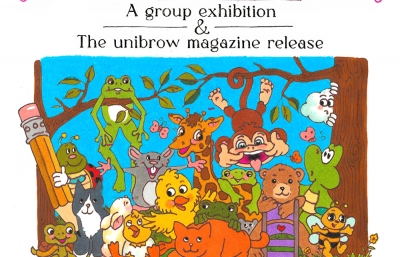Do you think of your art as escapism, or is it a harsh reality?
It’s a reality. I definitely use my work as a way to reflect on my own history, before I start casting stones. I think the application and the subjects I use in my work do lend themselves to a level of naivety, that for me maybe is a form of escapism or at least a way to engage with an inner self trying to make sense of the world.
On a side note, I tend to rewatch reruns of shows from my childhood. Almost daily. If I’m not trying to keep up with current events, then I’m probably watching some show I’ve seen a thousand times that I’m too embarrassed to name. It sounds silly, but with so much uncertainty around us, a lot of times I need to know how a story will end.
I don't want to belabor this, but graffiti has, how do you say, become more vital to talk about recently. I think it has to do with protest, with activism, and maybe the sort of anti-authoritarian nature of seeing so much graffiti on the streets in the pandemic. We weren't allowed to go outside and yet graffiti writers took over the outside world. So I think the conversation about freedom and rebellion is special to consider. What did you take from street works that helped you today?
The act of painting graffiti has always been political. Whether that’s writing you “wuz here” in a school textbook, to pedestrians painting on Confederate monuments. So whether it was a conscious act to defy Covid mandates or writers just trying to take advantage of the situation, I definitely think graffiti has played a part in mainstream America in a way it never has before.
I won’t lie, when the pandemic first started I was practically living in isolation on the Cape, so we were all taking serious precautions. Like Covid wasn’t really happening where I was, so that shit was scary. My ass was really envisioning the beginning of the zombie movie when the outbreak started (laughs). I’m a southerner, so we are strapped and ready for the apocalypse, revolution, or the next Civil War. When I saw fools popping off hard with the graffiti and “essential” workers out there buffing it at the demand of the city, a part of me was a little agitated. I’m sure people would argue that these people didn’t have to show up to work, especially over something so trivial during a global pandemic. But as a person from a place where the median family only makes $45,000 a year, it’s just not that realistic for most people living paycheck to paycheck. We saw this on a global scale. So part of me was empathetic to that.
You know, that’s the double-edged sword of graffiti, though. It’s the reason I have so much respect for the subculture and the reason I was drawn to it. It is freedom, and I’m not out here trying to be the fucking morality police, but in the same way we have seen people comparing wearing masks to slavery, we have seen writers painting family-owned business with no intention other than wanting to rep their three-letter acronym. The number of writers I saw criticizing BLM and protesters for the destruction caused just seemed a little hypocritical. I mean, I know some real criminals out here who were in these streets back in the day who quickly turned into “law-abiding citizens,” “saving America,” and who now build guns. Maybe that’s anecdotal, but I think we all have interactions and experiences that reflect larger attitudes of society.
That said, I’d be lying if I said I wasn’t hyped about whole trains getting hammered in NYC. I’ve just always been the type of person who has these internalized conversations with myself, playing devil’s advocate and trying to consider all viewpoints. Regardless, graffiti is what I come from. Even my weird bastard backwoods version of it. My experiences, and my ability to be impartial to the materials and tools I use, all derive from working on exterior surfaces, not having any money, no access to prestigious artist grants, and making work by any means necessary, regardless of how anyone else feels about it.
If you love something, you should be able to criticize it. You should want to! A lot of my work now is definitely me drawing these parallels.












